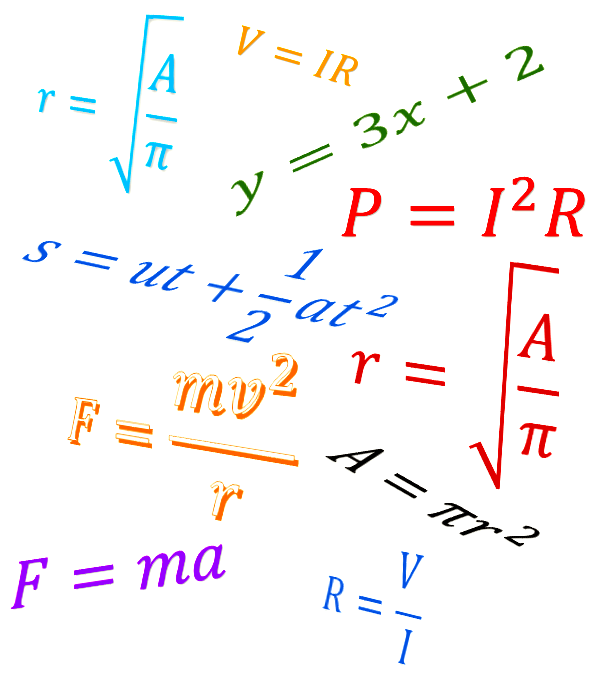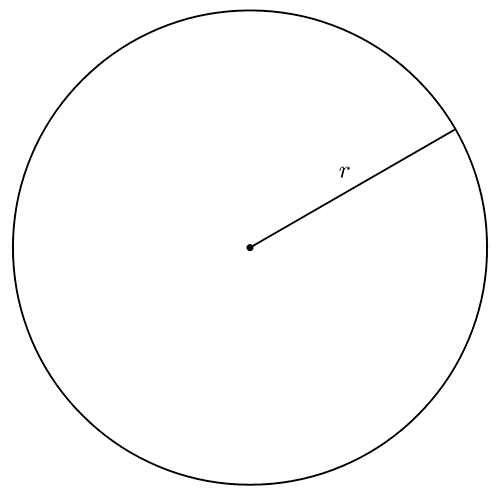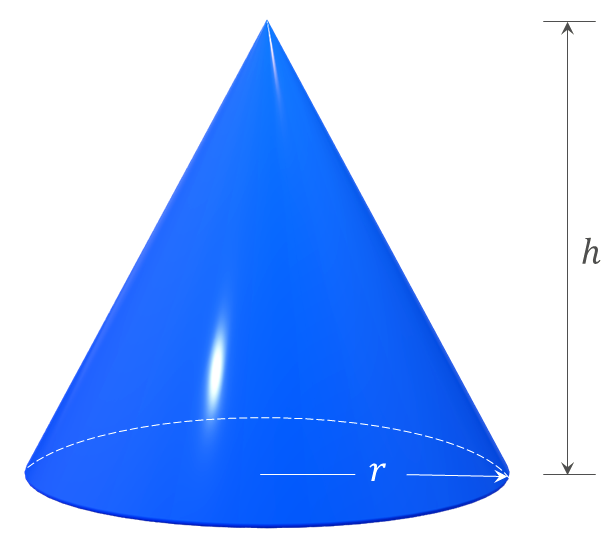A1.2 Algebraic substitution

This module shows how to replace pronumerals with numbers in a formula to get a numerical value for some quantity.
In many courses you will be required to use formulae to calculate something of interest. The process of substituting numbers for pro-numerals in an expression or formula is called substitution. This module provides some examples.
Hi, this is Martin Lindsay from the Study and Learning Centre at RMIT University. This is a short movie on substitution in algebra. Replacing a pro-numeral or variable or letter in an expression or formula with a number is called substitution. Instance, here’s an expression, three P, and we want to work this out, in other words evaluate, if P equals minus five. So substituting P equals minus five into the expression, three P is the same as three times P, which is three times minus five which is minus 15.
Here are two more examples. Evaluate A plus five over B, if A equals minus nine and B equals two, here you notice we have two pro-numerals A and B, so substituting A and B into the formula or, sorry, into the expression, we have minus nine plus five over two which gives us minus four over two which is minus two.
Here’s another one. We want to evaluate W squared minus two Z, if W equals minus one and Z equals five, so substituting into the expression we have minus one all squared minus two times five which gives us one minus one times minus one is one minus 10 is minus 9.
Let’s look at a more complicated expression. Here we have the formula C equals five brackets F minus 32 close brackets over nine and that’s the formula that converts a temperature in Fahrenheit into one in Centigrade, so here we want to convert a temperature of 100 degrees in Fahrenheit, so substituting F equals 100 into the formula we get 37.78 degrees Celsius, so again, as with the previous examples, we’re just substituting the unknown, or the pro-numeral, which in this case is F, into the formula.
Now try some questions for yourself. The answers to these questions are on the next slide. Thanks for watching this short movie.
Pro-numerals
Pro-numerals are letters or symbols that represent numbers in a mathematical expression or formula. In the expression \[
\frac{a+b}{2}
\] \(a\) and \(b\) are pro-numerals. In the formula for the area of a circle1 \(A\) is the area, \(r\) is the radius and \(\pi\) is a number that is approximately \(3.14\).  \[
A=\pi r^{2}
\] \(A\), the Greek letter \(\pi\) (pronounced pi) and the letter \(r\) are pro-numerals.
\[
A=\pi r^{2}
\] \(A\), the Greek letter \(\pi\) (pronounced pi) and the letter \(r\) are pro-numerals.
Substitution
Putting a number into an expression or formula in place of pro-numerals is called substitution. For example if \(a=5\) and \(b=3,\) the expression \(\frac{a+b}{2}\) can be evaluated by substituting \(5\) for \(a\) and \(3\) for \(b\) wherever they occur. That is \[\begin{align*} \frac{a+b}{2} & =\frac{5+3}{2}\\ & =\frac{8}{2}\\ & =4. \end{align*}\]
Similarly, the area of a circle with a radius \(r=5\,cm\) is given by \[\begin{align*} A & =\pi r^{2}\\ & =\pi5^{2}\\ & =25\pi\\ & \thickapprox78.54\,cm. \end{align*}\]
Example 1
Evaluate \(\frac{a+5}{b}\) if \(a=-9\) and \(b=2.\)
Solution: \[\begin{align*}
\frac{a+5}{b} & =\frac{-9+5}{2}\\
& =\frac{-4}{2}\\
& =-2.
\end{align*}\]
Example 2
Evaluate \(w^{2}-2z\) if \(w=-1\) and \(z=5.\)
Solution: \[\begin{align*}
w^{2}-2z & =\left(-1\right)\times\left(-1\right)-2\times5\\
& =1-10\\
& =-9.
\end{align*}\]
Example 3
Use the formula \[
C=\frac{5\left(F-32\right)}{9}
\] to convert a temperature of \(212^{\circ}\)Fahrenheit (F) to Centigrade (C).
Solution:
Substituting \(F=212\) into the formula gives: \[\begin{align*}
C & =\frac{5\left(F-32\right)}{9}\\
& =\frac{5\left(212-32\right)}{9}\\
& =\frac{5\times180}{9}\\
& =100^{\circ}\ \textrm{centigrade.}
\end{align*}\]
Example 4
The current in an electrical circuit is given by \(V=IR\) where \(V\)is the voltage (in volts), \(I\) is the current (in amps) and \(R\) is the resistance (in ohms).

If the resistance is \(5\) ohms and the current is \(2\) amps, what is the voltage, \(V?\)
Solution:
We have \(r=5\) and \(I=2.\)Therefore, the voltage \[\begin{align*}
V & =IR\\
& =2\times5\\
& =10\,\textrm{volts.}
\end{align*}\]
Example 5
The volume \(V,\) of a right circular cone with base radius \(r\) and height \(h\) is given by \(V=\frac{1}{3}\pi r^{2}h.\)

If the radius of a cone is \(5\,cm\) and its height is \(15\:cm.\) what is the volume of the cone?
Solution:
In this case \(r=5\) and \(h=15\), so the volume of the cone is \[\begin{align*}
V & =\frac{1}{3}\pi r^{2}h\\
& =\frac{1}{3}\times\pi\times5^{2}\times15\\
& \approx392.7\:cm^{3}.
\end{align*}\]
Example 6
The formula relating distance traveled \(s,\) to initial speed \(u,\) acceleration \(a\) and time \(t\) is \[\begin{align*}
s & =ut+\frac{1}{2}at^{2}.
\end{align*}\] A car traveling at a speed of \(4\,m/s\) accelerates at a rate of \(2\:m/s^{2}\) for \(5\,s.\) How far does it travel during this time?
Solution:
In this case, \(u=4,\) \(a=2\) and \(t=5\). So the distance traveled is \[\begin{align*}
s & =ut+\frac{1}{2}at^{2}\\
& =4\times5+\frac{1}{2}\times2\times5^{2}\\
& =20+\frac{1}{2}\times2\times25\\
& =45\:m.
\end{align*}\]
Example 7
The area of a circle \(A\) is given by \[
A=\pi r^{2}
\] where \(r\) is the radius. If a circle has an area of \(30\,cm^{2}\) what is it’s radius.
Solution:
Substituting \(A=30\) we have \[\begin{align*}
30 & =\pi r^{2}.
\end{align*}\] We want \(r\). First we divide both sides by \(\pi\) to get \[\begin{align*}
\frac{30}{\pi} & =\frac{\pi r^{2}}{\pi}.\\
& =r^{2}\\
r^{2} & =\frac{30}{\pi}\\
r & =\sqrt{\frac{30}{\pi}}\\
& \approx3.1\:cm.
\end{align*}\]
Exercises
- Evaluate the following:
\[\begin{array}{ll} a)\,-4k\textrm{ if $k=7$ }\quad & b)\,2mn\textrm{ if $m=4,\,n=-2$ }\\ c)\,e^{2}-5\textrm{ if $e=2$ }\quad & d)\,5-b-b^{2}\ \textrm{if $b=3$ }\\ e)\,2k^{2}+4\textrm{ if $k=-6\quad$ } & f)\,-3ab^{2}\ \textrm{if }a=4,\,b=2\\ g)\,\frac{n}{4}+2\textrm{ if $n=10$ }\quad & h)\,\frac{u}{5v}\textrm{ if $u=-20,\,v=2$ } \end{array}\]
\[\begin{array}{llllllll} a)\,-28 & b)\,-16 & c)\,-1 & d)\,-7 & e)\,76 & f)\,-48 & g)\,4.5 & h)\,-2\end{array}\]
- Evaluate the following if \(a=-1,\,b=6,\,c=3,\,m=-2,\,n=2.\)
\[\begin{array}{ll} a)\,3a^{2}-7\quad & b)\,3a-b^{2}\\ c)\,\left(2m+1\right)^{2} & \quad d)\,3\left(a-b^{2}\right)\\ e)\,\frac{2m}{n} & \quad f)\,\left(m-n\right)^{2} \end{array}\]
\[\begin{array}{llllll} a)\,-4\ & b)\,-39 & \ c)\,9\ & d)\,147 & \ e)\,-2 & \ f)\,16\end{array}\]
Download this page, A1.2 Algebraic Substitution (PDF 402 KB)
What's next... Removing brackets
